Content
- 1 Signs of disease in cherries
- 2 Description of cherry diseases and their treatment
- 2.1 Cherry chlorosis: photo and treatment
- 2.2 Gum discharge of cherries
- 2.3 Cherry coccomycosis
- 2.4 Verticillium wilt of cherry
- 2.5 Cherry moniliosis
- 2.6 Cherry fruit rot: control and prevention measures
- 2.7 Hole spot or cleasterosporiasis
- 2.8 Brown spot or phyllosticosis
- 2.9 Powdery mildew on cherries
- 2.10 Rust on cherries
- 2.11 Scab on cherries
- 2.12 Cherry leaf curl
- 2.13 Rasp-shaped cherry leaves
- 2.14 Mosaic
- 2.15 False tinder
- 2.16 Sulfur-yellow tinder fungus
- 2.17 Cherry bacteriosis
- 2.18 Bacterial burn of cherries: treatment and photos
- 3 Cherry pests and their control, photo
- 4 Control and prevention measures
- 5 Conclusion
When the owner of the garden notices that the leaves of the cherry tree are turning yellow, and even at the beginning or height of the season, when they are supposed to turn green, he immediately wants to do something to help the tree. But there are so many reasons for the yellowing and even falling of cherry leaves that it is impossible to take a quick glance at them all.This includes inappropriate care, various diseases, unfavorable weather conditions, and pests. Therefore, before starting treatment, it is necessary to comprehensively examine the tree and identify all possible causes that could lead to a similar result.
Signs of disease in cherries
In addition to yellowing of the leaves, other signs can often be observed in cherries, which can be symptoms of both diseases or damage by pests, and unsuitable conditions for the growth and development of trees.
Why don't buds bloom in cherries?
If the cherry planted last year does not show signs of life in the spring, and the buds on it do not bloom in due time, then perhaps the problem is not diseases or pests at all, but simply mistakes were made when choosing a place for planting or the planting process itself. The most common mistakes are the following:
- close occurrence of groundwater;
- choosing a shady, cool or drafty planting location;
- deepening the grafting site of the seedling or its root collar;
- pruning was carried out incorrectly or untimely;
- insufficient or excessive feeding.
Another most common reason is the banal freezing of the roots or trunk of the cherry tree. Moreover, the buds may not bloom not so much from significant frosts (although cherries do not tolerate frosts below -30°C well), but from sudden temperature changes during the day in the winter-spring period. It can reach 10-20 degrees.
It is quite simple to make sure that the buds did not bloom due to the freezing of the roots or trunk. A small incision is made on the branches, as well as on a selected piece of root, and the color of the bark and cambium is assessed:
- If the color is light brown, this means that the damage from frost is minor and can be treated.
- If dark brown, then the degree of freezing is quite high, and it will be much more difficult to help the cherries.
Why do cherries dry out?
In a cherry tree, regardless of its age, individual branches may begin to dry out. If no measures are taken, the entire tree may soon dry out. What reasons can lead to cherry branches drying out?
The first thing you need to remember, especially when it comes to a young cherry seedling, is whether it was planted correctly. Deepening during planting can lead to drying out of individual branches the very next year after planting.
Another reason may be weather conditions unfavorable for the development of cherries, primarily prolonged heat and frost. The fact is that varieties bred by breeders for temperate climates do not tolerate heat well. Conversely, heat-resistant varieties of cherries can be easily damaged by frost.
To protect against heat, it is enough to provide abundant and regular watering to the cherries.
To protect the trunk of the cherry tree from frost damage and sunburn in the autumn, you should whiten them with a special garden solution. It is advisable to completely cover young cherry seedlings up to 3 years old for the winter using agrofibre or other insulating materials. As trees age, they become more resistant to frost.
Cherry branches may dry out due to diseases: verticillium and monoliosis. The treatment of these diseases will be discussed in detail below.The activity of some pests, for example, California scale insects and bark beetles, can also lead to the drying out of cherry branches. Methods to combat them are described in detail in a separate chapter.
Why do cherry leaves turn yellow?
Yellowing and falling leaves can also be the result of many reasons:
- The weather is too hot and, as a result, there is a lack of moisture in the soil.
- Proximity of groundwater and waterlogging of the root system.
- Damage to cherry trees as a result of harsh winter.
- Various fungal diseases.
- Crown density.
- Lack of nutrients in the soil.
- Weakening of cherries as a result of pest activity.
Why do cherries drop fruits?
If the cherry blossoms are too abundant, then it is not surprising that immediately after its end the tree sheds some of its ovaries. Thus, there is a natural rationing of the number of fruits that the cherry can feed.
If the ovaries begin to fall off at a later date, especially when ripening fruits begin to fall from the tree in significant quantities, then it’s time to sound the alarm.
Fruit shedding can occur for the following reasons:
- The variety is self-sterile. To bear fruit, it needs a cherry tree of a different variety growing nearby;
- increased soil acidity;
- lack of nutrients (after flowering, cherries especially need feeding);
- lack of light due to thickening of the crown;
- overload with the harvest - in fruitful years, cherries need additional feeding after fruiting, otherwise the next season the tree may not have enough strength to produce a sufficient number of fruits;
- drought during flowering can lead to the fall of ovaries and unripe fruits;
- bad weather conditions during the flowering period. If during this period there is windy weather with rain and, as a result, the absence of bees and other pollinating insects, then you may not expect a good cherry harvest this season;
- invasion of pests: flower beetle, codling moth and cherry (cherry) fly.
Description of cherry diseases and their treatment
The most common are numerous fungal diseases that cause various spots on the leaves of the cherry and their falling, rotting of the berries and damage to the trunk of the cherry. These diseases are transmitted by spores, wind and contaminated instruments.
Bacterial diseases – are caused by bacteria and can also be transmitted by insect pests.
Viral diseases - Spread mainly by pests. They affect the vascular system of plants, and only preventive measures can help combat them. Effective methods for treating plants infected with viruses have not yet been found.
Non-communicable diseases appear mainly due to improper care of cherries.
Cherry chlorosis: photo and treatment
Chlorosis is a common physiological disease of cherries that is non-infectious in nature. The main sign of chlorosis is numerous yellow leaves that fall off at the wrong time.
Those cherries that grow on highly calcareous soils with a high level of groundwater and when the rootstock and scion of the seedling do not match are in the greatest risk zone. Trees develop only a superficial root system, thereby not receiving the necessary nutrients. Fruiting decreases, and over time they may even dry out.
To treat this disease, an integrated approach is required, as a result of which, first of all, the conditions for the activity of the root system will improve:
- for irrigation, it is advisable to use soft water from natural reservoirs or rainwater;
- You cannot fertilize trees with fresh manure, but applying nitrogen fertilizers is necessary first. It is best to use humus in combination with bird droppings, diluted 10-12 times with water;
- Quick help in treating chlorosis can be provided by spraying the tree with a solution of iron sulfate (50-70 g per 10 liters of water). It is better to repeat the procedure at least three times at intervals of two weeks;
- In the fall, it is useful to add iron sulfate mixed with humus or compost into several holes around the circumference of the tree crown to a depth of 60 cm (0.15 kg of iron sulfate is taken per 10 kg of humus);
- to improve the oxygen regime in the root system zone, you can use a solution of potassium permanganate (30-40 g per 10 l). One tree requires about 10-15 liters of solution.
Gum discharge of cherries
This is most likely not even a disease, but an alarming sign indicating that the tree is unwell. From cracks and holes in the bark, a viscous yellowish liquid—gum—is released and hardens in air.
Gum discharge accompanies many fungal diseases: moniliosis, clasterosporiosis and others. To prevent gum disease, it is important to strictly follow the agricultural techniques for growing cherries. All wounds on the bark must be treated with copper sulfate and then covered with garden varnish.
Cherry coccomycosis
A very dangerous fungal disease that actively spreads in rainy summers or areas with a humid climate. First, pinkish-brown spots appear on the leaves; a pale pink coating can be seen on the underside. If you do not take action, the leaves begin to turn black and fall off by mid-summer.
Treatment of the disease consists of treating cherries three times with a 1-3% solution of copper sulfate or Bordeaux mixture: when the buds are swollen, after flowering and harvesting. It is also possible to use Topaz (1 ml per 3 liters of water) and Khom (4 g per 1 liter of water) for treatment.
Verticillium wilt of cherry
It is this disease that most often causes cherries to dry out. Moreover, mostly young trees are susceptible to it. If the branch begins to dry in early spring at the same time as the buds and buds are opening, then it is most likely verticillosis. In addition, brown spots appear on the branches and trunk, from which rusty-colored gum begins to ooze. Buds and buds can dry out within a week or two after blooming. If treatment is not taken, young or weakened cherries can dry out within one season. Mature trees can survive up to 7-8 years, but eventually they too will die.
To prevent the disease, you should not plant plants of the nightshade family (tomatoes, eggplants, tobacco, potatoes), as well as melons, garden strawberries and sunflowers near cherries. Also, for preventive purposes, root feeding is carried out with urea or an aqueous solution of potassium sulfate (1 tablespoon per 10 liters of water).
Disease spores often enter trees from the soil when the roots or trunk are injured, so you should be especially careful when planting and loosening the soil around the seedling.
At the first signs of disease, the tree must be treated with a powerful antifungal agent, for example, Topsin-M (70%), using a 0.1% solution, to save the cherry from drying out.
When gum appears, the wounds are lightly cleaned and treated with garden pitch. And for the winter, the cherry trunk is coated with a mixture of copper sulfate and lime.
Cherry moniliosis
This disease is also called gray rot or monilial burn due to specific symptoms. The branches and even the trunk of the cherry tree turn black and dry out as if they had suffered from a fire, and the berries become covered with gray tubercles and begin to quickly rot.
Due to the strong spread of the disease in recent years, it is recommended to grow cherry varieties resistant to moniliosis:
- Homestead;
- Valery Chkalov;
- Tenderness;
- Silvia;
- Van-Compact.
Infection with disease spores occurs through the pistils of flowers, and the flowers and ovaries are the first to suffer - they turn brown and dry out. The development of the disease is very rapid, especially in cool and humid weather, so it is necessary to take immediate treatment measures:
- cut off all damaged branches, including healthy tissue, and immediately burn them. They also destroy all the mace and plant remains on the ground;
- if there are cracks in the bark, then they are the main site of infection. They need to be cleaned, treated with 1-3% copper sulfate and covered with garden pitch;
- treat cherries after flowering and a month later with Bordeaux mixture or copper sulfate;
- to prevent the disease in the fall, paint the trunks with garden whitewash with the addition of copper sulfate;
- For treatment, you can also use the drugs Strobi, Skor, Topaz and Chorus.
Cherry fruit rot: control and prevention measures
Signs of the disease appear primarily on the berries and are slightly reminiscent of moniliosis. These are brownish spots, which then actively mold. Fruit rot spots, unlike moniliosis, are not randomly located, but in the form of concentric circles. In addition, the cherry leaves remain intact and unaffected.
Prevention of the disease is the treatment of cherries in the spring against diseases and pests with the help of fungicides (Abiga-pik, copper oxychloride, Bordeaux mixture) and sufficient fertilizing with mineral fertilizers. To treat a tree, the same preparations are used, only the treatment is carried out after flowering and harvesting.
Hole spot or cleasterosporiasis
Among the diseases of cherry leaves, cleasterosporiasis is the most common. The disease can be diagnosed by the appearance of reddish spots with a dark border on the leaves. After a couple of weeks, holes form in their place - hence the name of the disease. After some time, the leaves dry out completely and fall off. The fruits can dry directly on the branches.
As a preventive measure, spraying cherries after flowering with a 1% solution of copper sulfate is used.
Treatment of the disease consists of cutting off branches with diseased leaves and treating the cuts with sorrel juice three times every 10 minutes. To prepare it, pour 1 kg of sorrel leaves into 10 liters of water, leave for 2-3 hours, wipe and squeeze out the resulting juice. After which all cuts are covered with garden varnish.
Brown spot or phyllosticosis
The disease appears as round brown spots with black dots on both sides of the leaf. If the infection is severe, leaves may also fall off. Prevention and treatment of the disease are the same as for perforated spotting.
Powdery mildew on cherries
With this disease, the shoots and leaves become covered with a white felt coating. Later black dots appear on it. If a young cherry seedling dries out, then, apparently, this is the result of powdery mildew. The disease most of all annoys young trees, especially when heat and dryness sets in after rainy weather. For adult cherries, powdery mildew is not so dangerous, but still reduces their winter hardiness and reduces yield.
For prevention, it is necessary to cut off the affected shoots, burn them and carefully embed fallen leaves into the soil.
For treatment of obvious signs of infection, spray with any fungicides 4-6 times per season with an interval of 10 days.
Rust on cherries
The disease is also called cylindrospora or white rust. If there are no leaves on the cherry tree in the middle of summer, it means that white rust has taken over. The disease causes leaves to completely fall off on cherries as early as July, which can cause the trees to weaken and freeze in the winter. Treatment consists of burning fallen leaves, cutting out diseased and dry branches, and especially carefully insulating the tree for the winter.
Scab on cherries
Among the diseases of cherry fruits, scab is far from the most dangerous. As a result of the disease, the leaves become stained and curl into a tube, green fruits do not ripen, and the skin of ripe ones cracks.For treatment, cuprosan powder is used, which is scattered around the roots of the cherry. Its solution can be sprayed on fruits and leaves. After harvesting, Horus can also be used for treatment.
Cherry leaf curl
Another fungal disease of cherries, in which the leaves become wrinkled and curled with noticeable swellings. And on their underside a white sticky coating is clearly recognizable.
Prevention and treatment measures are the same as for most fungal diseases - spraying trees and the soil under them in early spring with a solution of iron sulfate (20 g per 5 liters of water) or 1% Bordeaux mixture.
Rasp-shaped cherry leaves
With this disease, the leaves are noticeably deformed, between the veins they seem to swell, and their shape becomes slightly sharper. The disease is viral in origin and cannot be treated.
Mosaic
Another viral disease for which no effective drugs have yet been invented. Light yellow stripes appear on the leaves along the veins or in the form of circles on the surface of the leaf. To combat the disease, first of all, it is necessary to control the occurrence of pests that spread it.
False tinder
Diseases of the cherry trunk are very dangerous, as they often lead to the inevitable death of the tree. The false tinder fungus affects the wood so that it begins to resemble a sponge and the tree can break from a strong gust of wind. The mushroom most often grows from cracks in the lower part of the trunk.
For preventative purposes, whitewashing the trunks in autumn and spraying the tree in early spring with a solution of iron sulfate (2 cups per 10 liters) helps. For treatment, it is necessary to use stronger means, for example, treatment with Nitrofen (1 glass per 10 l).
Sulfur-yellow tinder fungus
The disease is very similar to the previous one. The fruiting bodies of the resulting fungus are predominantly yellow in color. Methods of treatment and prevention are the same as in the case of false tinder fungus.
Cherry bacteriosis
This disease, which appears on cherries no earlier than 4 years of age, is of bacterial origin. People often call it bacterial cherry canker, or canker. There are still no drugs to treat this disease that would guarantee 100% success.
The disease manifests itself in the form of dark, watery spots on fruits and leaves. Later they appear on the stalks and buds, as well as on the bark of the tree. The disease actively develops in cold and damp weather, and in dry conditions it may not manifest itself at all.
Despite the lack of visible treatment methods, you still shouldn’t give up in the face of the disease. Throughout the summer, it is necessary to trim off wilted shoots, browned inflorescences, ovaries and spoiled fruits. All this should be burned immediately. Thus, the development of the disease can be stopped, but not completely destroyed.
Bacterial burn of cherries: treatment and photos
The first sign of this disease is blackening of the cherry leaves around the edges. Then the cherry leaves wither and entire branches dry out. There is no official treatment for this disease, but many enthusiasts try spraying and injecting conventional antibiotics, such as Streptomycin, into the tree trunk. The disease can recede if you act systematically and regularly. As an additional treatment, spraying the tree with fungicides, in particular copper sulfate, is used.
Cherry pests and their control, photo
Not only do pests directly harm the leaves, fruits and bark of cherries, but they also carry dangerous and incurable viral diseases.
Ants on cherries: how to get rid of them
Ants are dangerous not in themselves, but as carriers of aphids. Therefore, while the latter are not observed on cherries, it is most effective to use the drug Grom-2 against ants, which crumbles in places where they accumulate.
Aphids on cherries: how to get rid of them
Aphids are the most common pest not only on cherries, but also on most fruit and berry crops. It appears in early spring and especially likes to gnaw on the youngest leaves of trees weakened after heavy spring pruning.
Aphids are often fought with folk remedies: solutions and infusions of ash, celandine, dandelion and garlic.
Before flowering, you can also use effective chemicals: Komandor, Aktara, Konfidor.
How to get rid of black aphids on cherries
Black aphids are quite common on cherries and differ from their green relatives only in their black color. The pests are so small that they are practically indistinguishable. But their presence can be detected by the following signs:
- leaves curl inward and fall off;
- on their inner side you can see black dots;
- Ants live in large numbers nearby.
The fight against this pest does not cause any particular difficulties, since if you do not wait for it to multiply abundantly, then in the spring it is easily destroyed with the help of any insecticide, for example, Fitoverma.
Cherry weevil
The pest is a bronze beetle up to 1 cm long. The beetles and their larvae overwinter in the soil. They come to the surface during the cherry blossom period and feed first on buds and flowers, and then on ovaries and fruits. Pests are quite capable of gnawing holes of different sizes in leaves. Therefore, if the cherry leaves end up in holes, then most likely a weevil has worked here. Larvae are laid in fruits.
To combat pests, they are shaken off the trees and destroyed. To treat trees, they are sprayed before and after flowering with Inta-Vir, Fufanon or Kinmiks.
cherry fly
It is thanks to the activity of the cherry fly that the fruits of cherries can fall for no apparent reason. The caterpillars of this pest are tiny, almost invisible to the eye, white worms. The pest poses a particular danger to middle and late varieties of cherries.
To combat cherry fly, the tree is sprayed twice a season with Iskra or Molniya. The first time is at the end of April, when the average air temperature exceeds +15°C. The second time - after about 20 days. In order not to give the pest any chance, the same preparations are sprayed on the ground around the cherry tree once a week until the end of summer.
California scale insect
The pest has a very small size (1-2 mm) and a protective coloring, so it is difficult to notice. But if you look closely, you can see subtle growths on the bark of the branches. The scale insect sucks juice from plants, so leaves and branches may dry out and fall off if they are severely affected.
To treat a tree and fight a pest, you must first cut and burn all damaged branches, then wash the branches with a strong stream of water, freeing them from adherent insects. Only after this the branches are generously sprayed with Aktara or Confidor solution.
Bark beetles
The main sign of a bark beetle infestation is the presence of passages in wilted branches or trunks. In order for the pest to become uninterested in cherries, they need proper care. In the spring, before the buds open, the tree affected by the pest is treated with special preparations against the bark beetle.
All dried and damaged branches must be trimmed and burned.
Cherry sawfly
This pest is capable of building entire nests of cobwebs on cherries. Caterpillars eat the pulp of the berries and leaves down to the veins. For the fight, the drugs Iskra-M and Piriton are used. For an adult tree, the consumption of the drug is 3-4 liters.
Cherry shoot moth
This pest can destroy the buds, flowers and leaves of cherry trees. They fight it during the period of kidney swelling with the help of drugs Karbofos, Holon.
Control and prevention measures
To prevent the invasion of pests and diseases, it is necessary to treat cherries with urea in early spring, before the start of sap flow. You should spray not only the trees themselves, but also the ground around them. After a couple of weeks, you can spray the plants with a 1% solution of Bordeaux mixture.
And in the fall it is necessary to completely cut out all damaged and dry branches. And whiten the cherry trunk with a garden solution with the addition of any copper-containing preparation.
Conclusion
Thus, if cherry leaves turn yellow, then all is not lost. With careful attention to the tree, you can not only save it from all sorts of misfortunes, but also give it a long life with abundant annual fruiting.





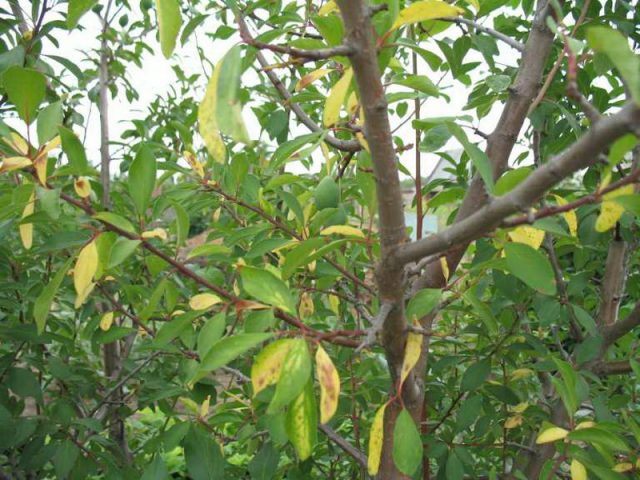

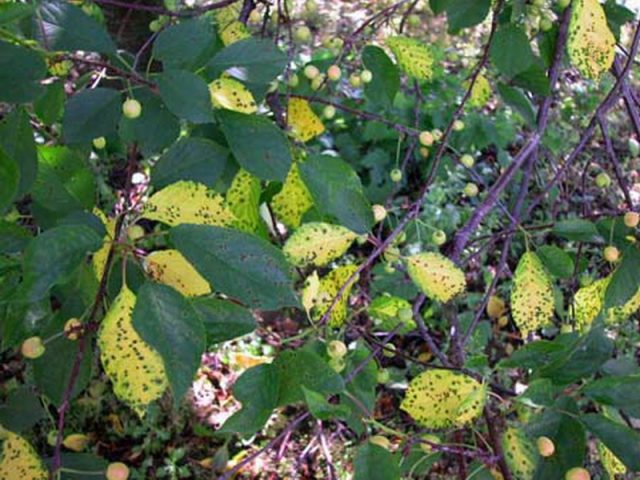




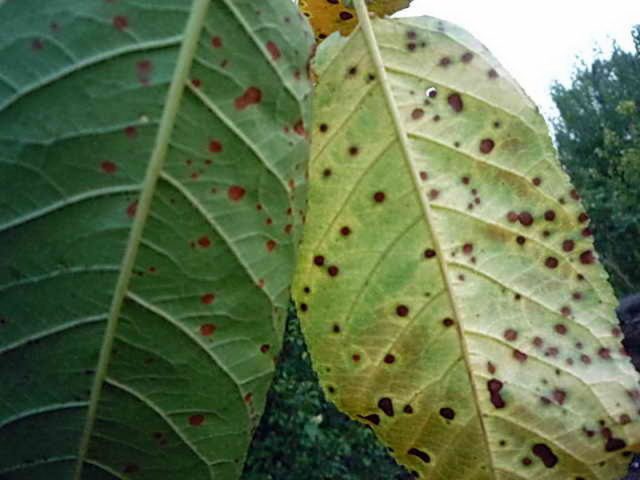


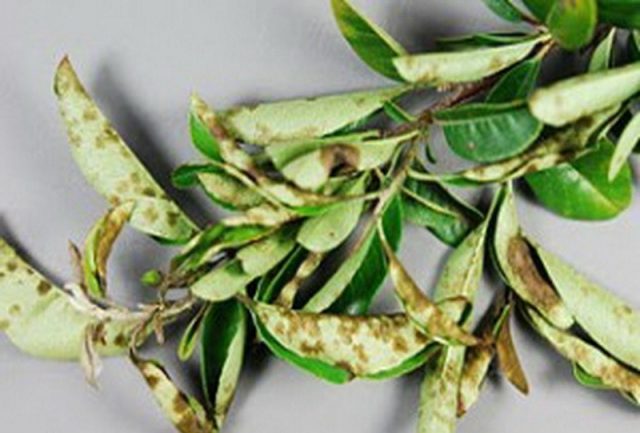



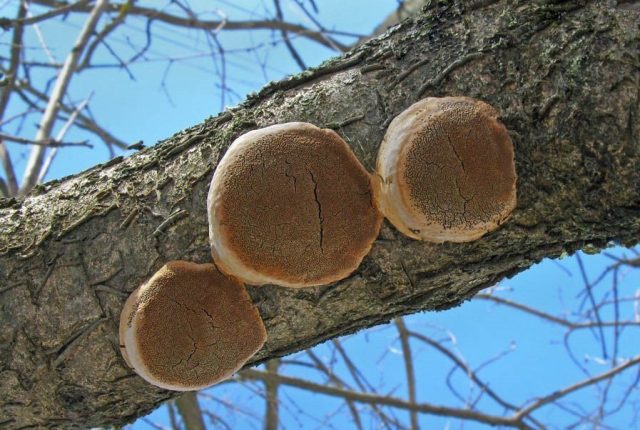



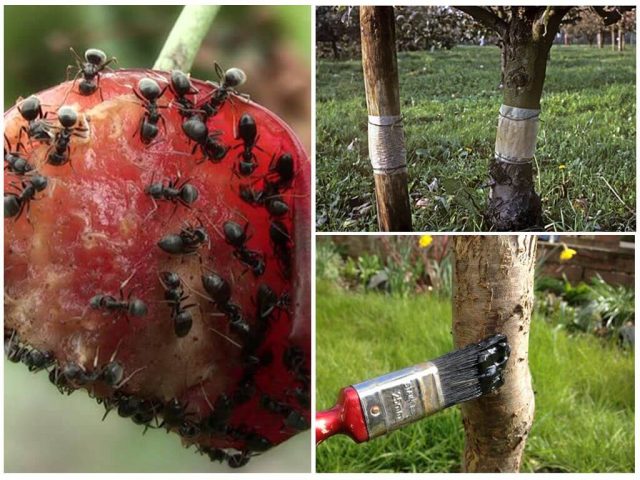
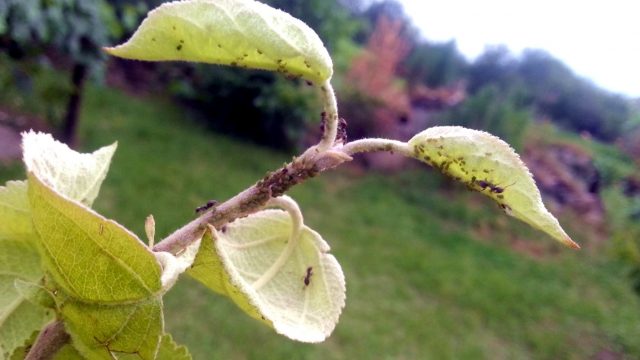
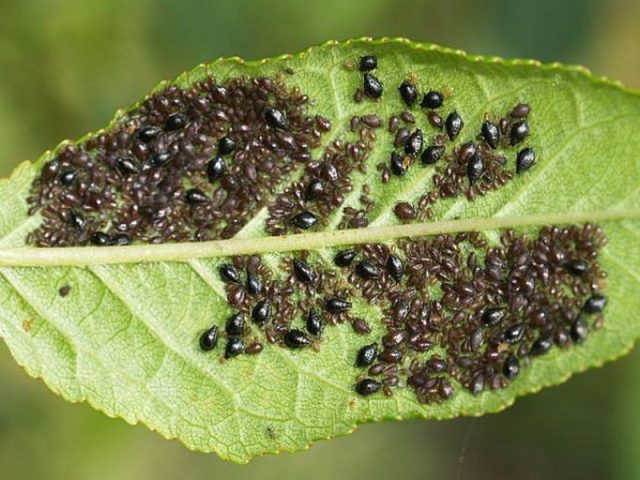
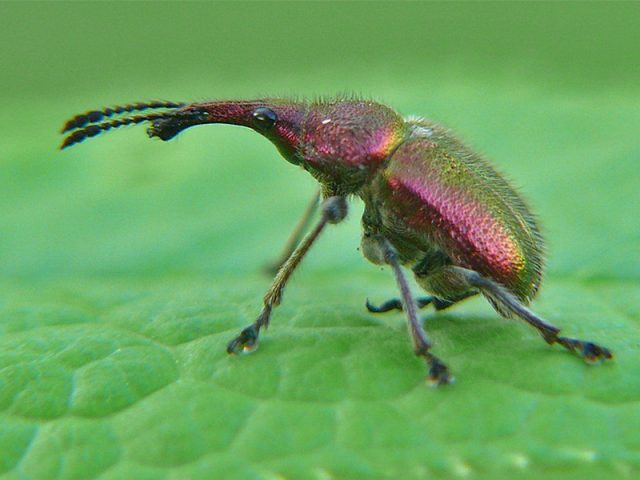
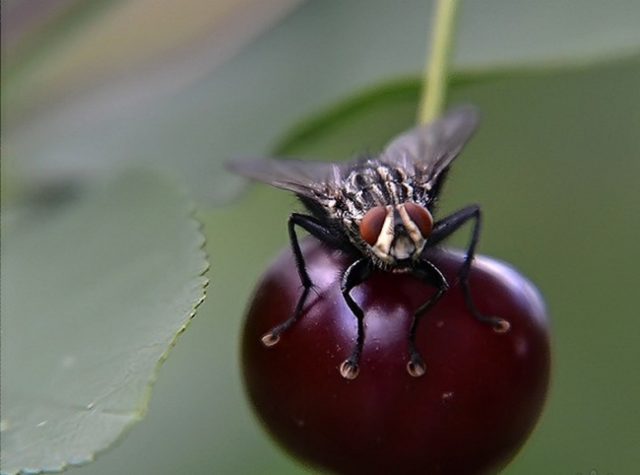

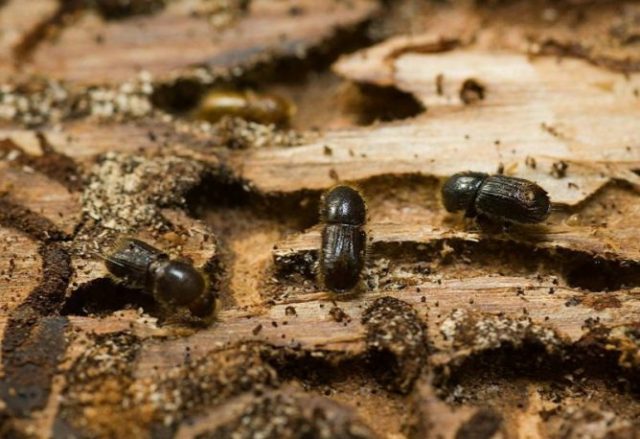
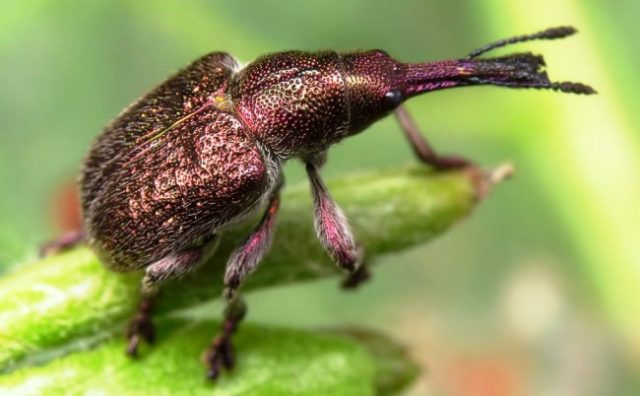
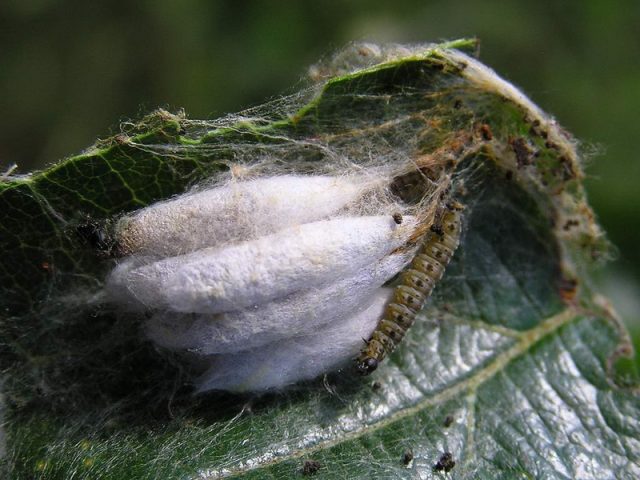



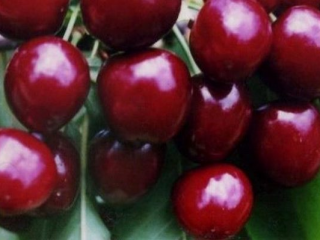
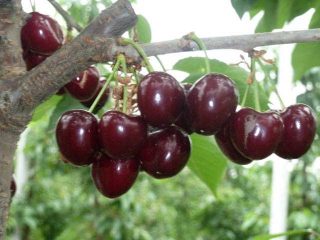

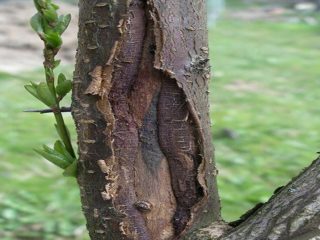

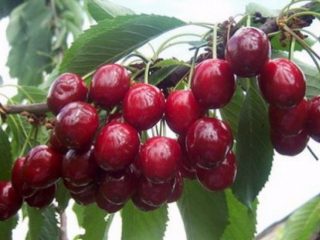
All the cherry leaves have turned yellow, and now the edges are brown.And they crumble. The tree dies. Good care. What kind of attack is this? How to treat?
Good afternoon.
Unfortunately, without a photo and a detailed description, it is almost impossible to determine the cherry disease. Most likely, your tree has been affected by fire blight. You can read more about cherry diseases and methods of treating them in the article
https://mygarden-en.desigusxpro.com/sad-i-ogorod/derevya/bolezni-i-vrediteli-chereshni-opisanie-s-fotografiyami.html